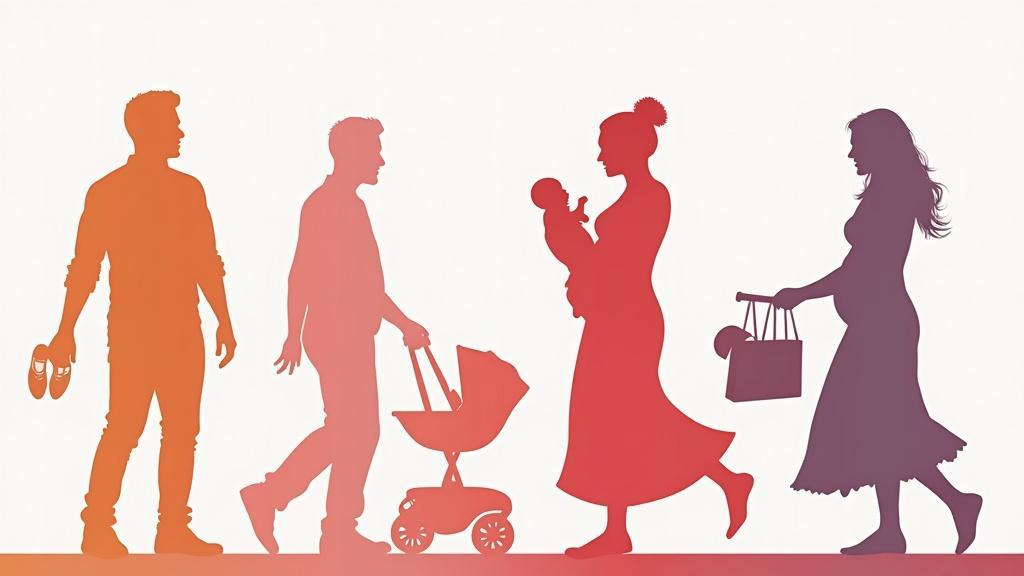The “Cry It Out” sleep training method has been a subject of debate among parents, pediatricians, and child development experts for many years. This approach involves allowing infants to cry for specified periods before providing comfort, with the aim of teaching them to self-soothe and fall asleep independently. Advocates of the method claim it effectively establishes healthy sleep patterns and promotes self-reliance in infants.
However, critics argue that it may be detrimental to a baby’s emotional development and potentially lead to long-term negative effects on mental health. The controversy surrounding this method primarily stems from differing perspectives on the emotional and psychological impact of allowing infants to cry without immediate comfort. Some parents believe it is crucial for babies to develop self-soothing skills and healthy sleep habits early on, while others worry that this approach may lead to feelings of abandonment and insecurity in infants.
To fully comprehend the debate surrounding the “Cry It Out” method, it is essential to carefully consider both the potential advantages and risks associated with the technique. This includes examining the scientific evidence behind sleep training and its effects on infant development. Research in this area has produced mixed results, with some studies suggesting potential benefits and others highlighting possible risks.
Factors such as the age of the infant, individual temperament, and parental consistency in applying the method can all influence its effectiveness and potential impact. Additionally, cultural differences in child-rearing practices and societal expectations regarding infant sleep may contribute to varying perspectives on the appropriateness of this sleep training approach. As with many parenting decisions, the choice to use the “Cry It Out” method often depends on individual family circumstances, values, and the specific needs of the child.
Parents considering this approach should consult with pediatricians or child development specialists to make informed decisions based on current research and their unique family situation.
Key Takeaways
- ‘Cry It Out’ sleep training involves allowing babies to self-soothe and fall asleep on their own, which has sparked controversy among parents and experts.
- The science behind ‘Cry It Out’ sleep training suggests that it can help babies learn to self-regulate and develop healthy sleep habits.
- Debunking myths and misconceptions about ‘Cry It Out’ sleep training can help parents make informed decisions about their child’s sleep.
- Consistent sleep is crucial for babies’ development, growth, and overall well-being, making ‘Cry It Out’ sleep training an important consideration for parents.
- ‘Cry It Out’ sleep training can benefit parents by promoting better sleep for both the baby and the parents, leading to improved overall family well-being.
- Tips for implementing ‘Cry It Out’ sleep training include creating a bedtime routine, setting a consistent sleep schedule, and providing a comfortable sleep environment for the baby.
- Seeking support and guidance from pediatricians, sleep consultants, and other parents can help ensure success and provide reassurance during the ‘Cry It Out’ sleep training process.
The Science Behind ‘Cry It Out’ Sleep Training
Understanding the Principles Behind the Method
This method is based on the principles of behavioral psychology and the concept of extinction, which involves the gradual reduction of a behavior through the removal of reinforcement. In the context of sleep training, this means that by not immediately responding to a baby’s cries, parents can gradually teach the baby to self-soothe and fall asleep independently. This process is thought to help babies learn to regulate their emotions and develop healthy sleep habits.
Evidence Supporting the Effectiveness of the Method
Research has shown that the “Cry It Out” method can be an effective way to help babies learn to fall asleep on their own and sleep through the night. A study published in the journal Pediatrics found that babies who were sleep trained using the “Cry It Out” method had significant improvements in their sleep patterns compared to those who were not sleep trained. The study also found that there were no negative effects on the babies’ emotional well-being or attachment to their parents as a result of the sleep training.
Addressing Concerns and Criticisms
Despite the evidence supporting the effectiveness of the “Cry It Out” method, some critics argue that it may have negative effects on babies’ emotional well-being and may lead to long-term issues with attachment and mental health. However, research has shown that there is no evidence to support these claims, and that the “Cry It Out” method can be a safe and effective way to help babies develop healthy sleep habits.
Debunking Myths and Misconceptions

There are several myths and misconceptions surrounding the “Cry It Out” sleep training method that have contributed to the controversy surrounding its use. One common misconception is that allowing a baby to cry without immediate comfort will lead to feelings of abandonment and insecurity. However, research has shown that babies are capable of self-soothing and can learn to fall asleep independently without negative effects on their emotional well-being.
Another myth surrounding the “Cry It Out” method is that it will lead to long-term issues with attachment and mental health. However, research has shown that there is no evidence to support this claim, and that the “Cry It Out” method can actually help babies develop healthy sleep habits and improve their overall well-being. It is important for parents to understand the science behind sleep training and to debunk these myths and misconceptions in order to make informed decisions about how to help their babies develop healthy sleep habits.
The Importance of Consistent Sleep for Babies
Consistent and quality sleep is essential for babies’ overall health and development. Babies who do not get enough sleep may experience a range of negative effects on their physical, emotional, and cognitive development. Research has shown that consistent sleep patterns are important for babies’ brain development, emotional regulation, and overall well-being.
Babies who do not get enough sleep may be at risk for a range of health issues, including obesity, diabetes, and behavioral problems. In addition, consistent sleep patterns are important for babies’ ability to learn and retain new information. Research has shown that babies who get enough quality sleep are better able to regulate their emotions, focus their attention, and learn new skills.
It is important for parents to understand the importance of consistent sleep for babies and to take steps to help their babies develop healthy sleep habits from an early age. The “Cry It Out” method can be an effective way to help babies learn to self-soothe and fall asleep independently, which can contribute to their overall well-being and development.
How ‘Cry It Out’ Can Benefit Parents
In addition to its potential benefits for babies, the “Cry It Out” method can also benefit parents by helping them establish healthy sleep habits for their babies and promoting independence. Sleep deprivation can have a range of negative effects on parents’ physical and emotional well-being, including increased stress, irritability, and decreased ability to focus and make decisions. By using the “Cry It Out” method, parents can help their babies develop healthy sleep habits, which can contribute to improved sleep patterns for both babies and parents.
This can lead to reduced stress and improved overall well-being for parents, as well as increased confidence in their ability to help their babies develop healthy sleep habits. The “Cry It Out” method can also benefit parents by promoting independence in their babies. By teaching babies to self-soothe and fall asleep independently, parents can help their babies develop important skills for regulating their emotions and developing healthy sleep habits.
This can contribute to improved overall well-being for both babies and parents.
Tips for Implementing ‘Cry It Out’ Sleep Training

Creating a Conducive Sleep Environment
It is essential for parents to create a safe and comfortable sleep environment for their baby, including a consistent bedtime routine and soothing bedtime rituals. This can help babies feel secure and relaxed as they learn to self-soothe and fall asleep independently.
Establishing Clear Boundaries and Expectations
It is also important for parents to establish clear boundaries and expectations for the “Cry It Out” method, including setting a specific period of time before responding to a baby’s cries. This can help parents remain consistent in their approach to sleep training and avoid confusion for their baby. Parents should also be prepared for some initial resistance from their baby as they adjust to the new sleep training routine.
Remaining Patient and Consistent
It is important for parents to remain patient and consistent in their approach, as this can help their baby learn to self-soothe and develop healthy sleep habits over time.
Seeking Support and Guidance for Sleep Training Success
Seeking support and guidance from pediatricians, child development experts, and other parents can be helpful for success with the “Cry It Out” sleep training method. Pediatricians can provide valuable advice on how to implement the method in a safe and effective way, as well as offer support for any concerns or questions that may arise during the process. Child development experts can also provide valuable insights into the science behind sleep training and its impact on babies’ development.
They can offer guidance on how to create a safe and comfortable sleep environment for babies, as well as provide tips for establishing healthy sleep habits from an early age. Connecting with other parents who have experience with the “Cry It Out” method can also be helpful for gaining support and encouragement during the sleep training process. Sharing experiences and tips with other parents can help build confidence and provide reassurance that the “Cry It Out” method can be an effective way to help babies develop healthy sleep habits.
In conclusion, the “Cry It Out” sleep training method has been a topic of controversy among parents, pediatricians, and child development experts for decades. However, research has shown that it can be an effective way to help babies develop healthy sleep habits without negative effects on their emotional well-being or attachment to their parents. Understanding the science behind sleep training, debunking myths and misconceptions, and seeking support and guidance from pediatricians, child development experts, and other parents can be helpful for success with the “Cry It Out” method.
By implementing the method in a safe and effective way, parents can help their babies develop important skills for regulating their emotions and developing healthy sleep habits from an early age.



